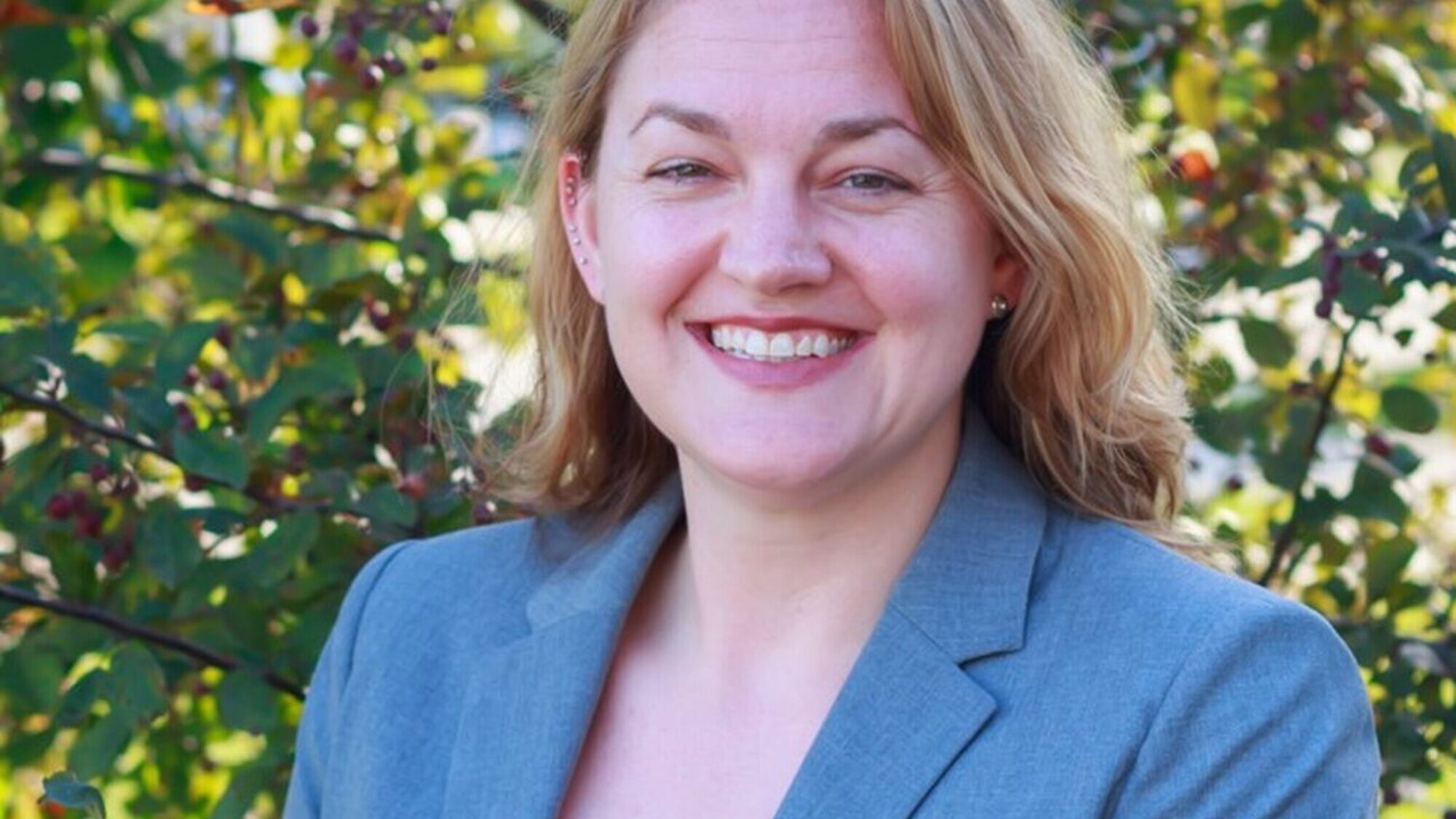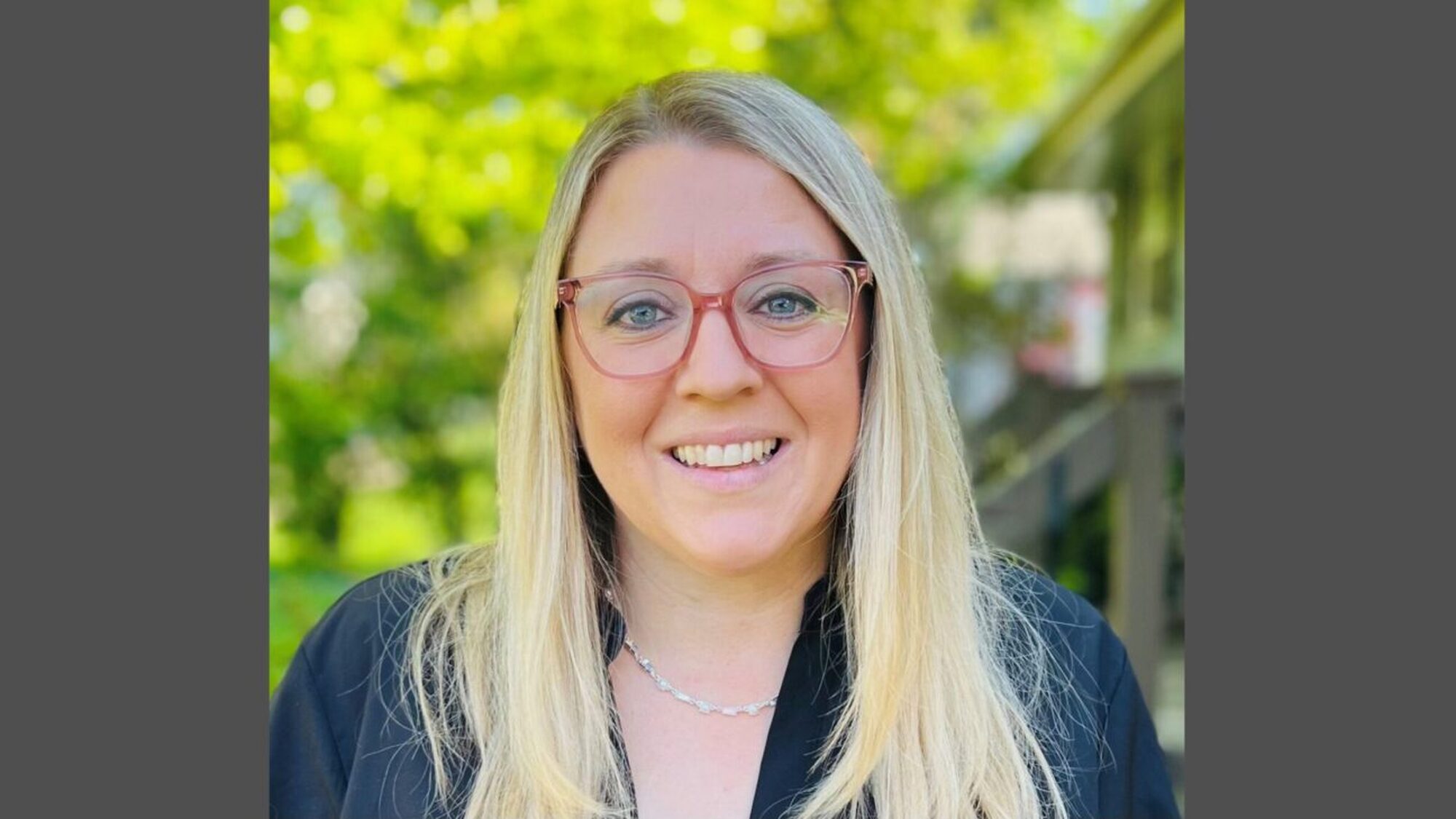Matt Alsdorf, associate director of the Center for Effective Public Policy (CEPP), conducted the interviews in January and February 2024. The interviews are edited and condensed.
Matt Alsdorf: How is implementation of the PFA going for your county overall?
State’s Attorney Jamie Mosser, Kane County: Overall, things are better than what we originally anticipated. There are still a lot of bumps in the road, which I’m confident that some legislative wording fixes will help address. But I do think that we’ve seen the positive aspects of the PFA. At this point, the positive far outweighs the negative.
State’s Attorney Abby Dinn, Franklin County: Procedurally, it’s gone very well. I think it’s gone smoothly in this county because we had prepared for so long. We had the assistance of technical assistance organizations as a pilot site [a] to prepare. We prepared forms, and we met with the sheriff and the police chiefs numerous times. And they were also involved in some of the meetings that we had prior to the implementation.
State’s Attorney Julia Rietz, Champaign County: The sky isn’t falling. I believe that more people are in custody for longer because they don’t have the option to simply post a cash bond. In some senses, that’s a good thing because some people who are charged with very serious offenses who had access to money were able to post a cash bond and be released. And I believe we are seeking detention on people who are dangerous. But people who are arrested in the middle of the night on low-level offenses are not able to post bond. People who are arrested on warrants are not able to post bond. There is a component of people who are spending more time in jail than they would have otherwise if they had been able to simply post a cash bond.
Alsdorf: What are the most positive changes you’ve seen?
Ability to Detain
The PFA allows state’s attorneys to petition for the detention of people charged with serious crimes who pose “a real and present threat to the safety of any person or persons or the community.” This replaced the prior system of detaining people primarily through the use of money bond.

Rietz: The fact that people who are charged with very serious offenses and have access to money can’t post bond if they’re detained is a good thing.
Dinn: I was against the no-cash bail system from day one, actually quite frustrated by it. But a benefit to the Pretrial Fairness Act is that for somebody who has been charged with a domestic battery and is detained by the judge, there’s no way they’re bonding out. It’s terrifying for victims to know that when bond is set, their abuser could get out just by paying money. I’m very glad that they’re not able to just come up with some money and get out and then go possibly abuse their victim again.
Mosser: We had an abuser who we charged probably three or four times before the Pretrial Fairness Act. Every single time, the bond amount went higher and higher, and he just kept posting it, and then he kept beating his victim. We were never able to bring the case to trial because the victim would recant, and we didn’t have substantive evidence to put her on the stand. Now he’s being held because his prior criminal history and the facts of the current case were enough that a judge held him pretrial. And I’m thrilled about that because that’s a great example of somebody who would have been able to post no matter what amount we put out there for him.
Pretrial Services
In 2021, the Illinois Supreme Court created the Office of Statewide Pretrial Services (OSPS) to support implementation of the PFA. OSPS provides services in 74 counties that did not have their own pretrial services agencies.
Rietz: OSPS is a fantastic addition. I was frankly skeptical about it at first, but we have our own division, and it’s staffed just for Champaign County. I was worried at the beginning that it was going to be a statewide office housed in Springfield, but it actually turned out to be very local. We get to know the officers; they get to know the people; they provide us with a lot of good information.
Dinn: We did not have pretrial services prior to the Pretrial Fairness Act. It’s actually been quite helpful since it’s something that I wish we’d had years ago but didn’t have the funding for. OSPS files reports for the judge, the state, and defense. They do the investigation and they interview the defendant before court. Before OSPS, I had to have the full criminal history ready for the judge when we would set the bond. OSPS does that now. It has taken some of the work off me and probably off the defense attorney because he would have had to have more of a personal interview with the defendant to get that information. When the defender is appointed immediately on the first appearance, he doesn’t have the ability to do that. So, it helps give everyone insight into the person so the judge can make a good decision as to whether they need to be detained or not.
Release by Law Enforcement
The PFA gives police the authority to release anyone arrested for a non-detention-eligible offense and to use citations in lieu of arrest for Class B and C misdemeanors and petty or business offenses.
Mosser: In the majority of our jurisdictions, officers are actually doing complaint and release, not just cite and release. On class A’s and even lower felonies, at the station they’re writing the complaint and releasing the person with the next court date. And I think that’s exactly the way to go because it avoids having a person dragged over here for our judge to maybe issue conditions, but in most of the cases not. We’re saving time, we’re saving on resources, and we’re not traumatizing people by keeping them overnight. There are so many good things with that.
Alsdorf: What has been challenging?
Mosser: I think the law itself is a great idea. I am a huge advocate of the elimination of cash bail. I had and continue to have concerns with the language of the law. We fixed a lot with the trailer bill [b], but there are still issues.
There is, in my opinion, difficulty in terms of understanding how they wrote the PFA for detainable offenses. Under the law, the State can file a petition to detain if the defendant is charged with a forcible felony and the offender is a danger. However, the legislators altered the forcible felony statute in this section. Before, the statute had a catch-all that made “any other felony which involves the use or threat of physical force or violence against any individual” a forcible felony. In the PFA, they changed it to “any other felony which involves the threat of or infliction of great bodily harm or permanent disability or disfigurement” [emphasis added]. Think of the aggravated assault cases that we prosecute on a daily basis. Most may not rise to the level of great bodily harm, but it does not mean that the person is not a danger to the person or the community.
Further there’s a huge issue with the 90-day requirement [c] to get a detained person to trial or the person is released. As we predicted, this is being used to the advantage of dangerous defendants because they’re not agreeing to any dates and demanding trial. This doesn’t get rid of our ability to try the case once they are released, but you will now see that they are no longer demanding a trial. This is being used as a sword and not a shield. This 90-day requirement was in the statute when we were in the limited situations of holding a person without bail. It’s just a poor part of the statute that stayed in, unfortunately.
Collecting Fines and Fees
In Illinois and many other places in the United States, court operations are often financed by the people who move through the criminal legal system through court costs, fees, and fines. A study by the Illinois Criminal Justice Information Authority wrote that, since the 1970s, jurisdictions have increasingly relied on fees and fines to fund their systems.
Dinn: When someone posted a money bond, if they were found guilty, their fines and fees could be paid from those funds. I’m not a state’s attorney who has a problem with dismissing a case if I can’t prove it and letting the bond go back to the defendant. However, when they are proven guilty or plead guilty, if they don’t already have a money bond deposited, there’s virtually no consequence to not paying fees and fines. Most of the assessments get waived. I’m in a county where there’s very little money. So, there’s just no incentive for someone to pay the fees, fines, or restitution that’s owed after disposition of the case. That’s one of the concerns that I had before, and I still have. I think that, over the next several years, we will see a huge impact on smaller counties like mine, on our budget, because fees and fines did fund a lot of areas of our county.
Offenses Eligible for Detention
Section 110-6.1 of the Pretrial Fairness Act outlines the charges for which a person can be denied pretrial release and the process for prosecutors to seek detention.
Dinn: I have been disturbed, and still am disturbed by the small size of the detention net.
Burglary is only detainable under the PFA’s public safety standard if it is burglary of a residence or involves the use of force against another person, or if the person’s criminal history creates a situation where there would be mandatory prison, which requires two prior Class 2 felonies in the last 10 years. But burglary of a garage, an automobile, or a business are serious offenses. Those are violations of people’s privacy, their right to live in their house and have the things that they worked for. The people committing burglaries—and there are a lot—are still doing that, and they know that there’s no chance they’ll be detained because it’s not a detainable offense.
We have concerns about low-level drug users. We have a very large methamphetamine problem and large overdose problem. Our hospitals have vending machines for Narcan outside the buildings, and there’s no fee.
Before the Pretrial Fairness Act, low-level drug users would come into jail and have bond set, which would force them to stay there, even just a few days. They would actually have a moment to get clean. So there was the opportunity for them to sober up and maybe get their life back on track. A few days in jail doesn’t hurt someone who is so high that they are incapable of controlling themselves…to just have them come down off their drugs to the point to get them maybe some help. That’s one of my main concerns about the Pretrial Fairness Act now.
Victim Notification
The PFA requires the state’s attorneys offices to notify crime victims when the court issues an order of protection and requires victims to be informed of their opportunity to obtain an order of protection.
Rietz: The requirement to notify victims has been challenging, but what I also find is that more victims are showing up to court and saying, “I don’t want you to do this.” I’m not sure if that’s what the advocates were hoping to accomplish. I think it puts a lot of pressure on a victim of domestic violence to feel like they have to come to court and tell us what to do and what not to do.
Alsdorf: How is the new detention process going overall?
Mosser: Kane County was one of the pilot programs [d], so we implemented a lot of processes to start off with. That included switching from a half-day bond hearing to a full day where we start with conditions of release hearings, then detention hearings in the afternoon. We worked with the judiciary, the public defender’s office, court services, and my office to create all the forms and the procedures. And I think we have a really good system in place now.
My office starts by determining whether or not a charge is detainable. If we determine it is, we go through the factors in the statute as to whether or not a person is a danger to the community or a specifically identifiable person. And then we consider the next factor, which is whether or not a condition or a combination of conditions could alleviate any concerns we have for safety, coming back to court, or obstruction of justice. We look at criminal history and the facts of the case. We’re communicating with victims and our police officers. If the officers have concerns, they’re letting us know about that. We’re applying all the factors before deciding whether or not to file a detention. And we have the time to do that since hearings to determine conditions of release are in the morning: the attorney that’s assigned to the detention can focus on that and will file petitions before the noon hour so that the public defender’s office has access to that as well.
Rietz: I think we are lucky in the sense that we have one judge doing the detention hearings. We spent a lot of time before the PFA went into effect coming up with our plan and our process and understanding what was important to each other.
We’re looking at the appellate court rulings, we’re looking at the detainable offenses, first, and then we’re looking at the seriousness of the offense. I’m not seeking detention on every detainable offense. We’re asking, is it detainable? What are the facts of the case? And then, very significantly for my judge, and appropriately, criminal history, prior history of failing to appear, prior history on probation, and compliance with court orders. Those are the kinds of things that the judge is really focusing on when you get to the question of “Are there any conditions or combination of conditions [e] that can alleviate the risk?”
I’ve been keeping track of 2023, and about 71 percent of the petitions we filed have been granted. We are comfortable now with what to expect. I think there was a concern by the advocates that, if you let us detain somebody, we were going to detain them and that judges weren’t going to use their discretion. The judges are using their discretion and making those decisions. It’s not a 100 percent detention rate.
Dinn: We screen all of our cases prior to filing them. We also don’t take the responsibility of requesting detention lightly. All of my staff have been on a tour of the jail, so they know it’s not some place that they want to be.
We review every case on a case-by-case basis as to whether they need to be detained and if they may have committed a detainable offense, but that doesn’t mean detention is necessary. There have been several that we have not filed to detain. Maybe it’s a domestic battery that was questionable as to the motives of the victim in calling the police. Or, there have been maybe some burglaries that were committed by someone that was under the influence, or a mental health issue, or possibly some other reason that they would not need to be detained.
My county board agreed to allow me to hire another attorney to handle the excessive caseload that we’re seeing now and also to handle the detention hearings specifically. I have an attorney that is set aside for that. She is able to review all of the charges that are filed and handle the detention hearings because I wouldn’t have had the staff to be able to do that.
Alsdorf: When you look ahead to the coming year, what challenges still need to be addressed?
Mosser: Staffing has been problematic because, obviously, not only the Pretrial Fairness Act but also the SAFE-T Act [f] increased the burden to all prosecutors’ offices, public defenders, circuit clerks, everywhere across the board. When we did the evaluation of this, we knew that the state’s attorney’s office needed at least three attorneys in our detention unit. We also needed at least one support staff person and an additional advocate because there now is this burden that we have to contact victims prior to these hearings that we’ve never had before.
So I went to the county board. Thankfully, it was responsive, and they did grant those positions to me. But since I got those positions in 2021, I have struggled to hire people because of the rate of pay that we have for this office.
Rietz: It’s a resource issue. We are spending more time in court, but nobody has given us more resources or the people that we need. There’s more paperwork.
We’ve always had arraignment court at 1:30 in the afternoon. Because it is taking more time, just because there are so many more words that you have to use and things that you have to do, we have increased court time so that we are handling initial appearances and detention hearings in both the morning and the afternoon, essentially doubling our court time.
Another challenge is the requirement that we provide all the reports which we rely on to the defense attorney. If we file a detention petition and give them a full police report, they’re asking for a continuance to the next day. So the person is sitting in custody another day so that the defense attorney can actually read the reports, because they don’t have time to read the full reports the day that I’m giving them to them. So that is changing our process significantly.
Alsdorf: Are you collecting data about, or do you have a sense of, how the PFA has affected your pretrial system?
Mosser: We have the data dashboard that is great because we’re making sure people can see what is going on with it. It shows how many people are arrested in our villages or cities and transported to first appearance court, the types of offenses people are arrested for, and the number of petitions to detain that are filed and granted.
We had already implemented the reforms in 2017 for bond hearings. So we did a study of our jail to see who was in there and who would be traditionally a detainable person versus somebody who’s not. We found that we had very few people who were in there for nondetainable offenses. So, we did not see that our jail population differed much from what we were doing before the PFA.
Dinn: I think that we obviously decreased our jail population significantly. We usually ran around 100 to 120 inmates per day prior to the PFA. Now today [g] we have 61.
Rietz: We have seen a decrease in our jail population since COVID, but we have not done any analysis yet to determine how much of that is due to the SAFE-T Act and how much is due to the natural movement of cases.
Find more information on CEPP’s Illinois Pretrial Fairness Act Resources.






